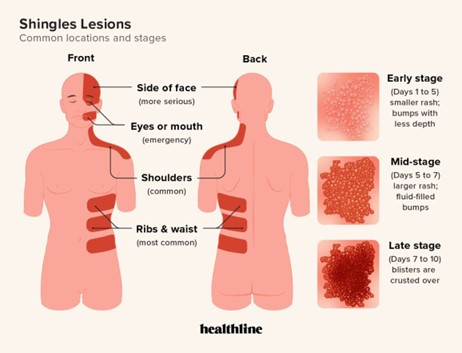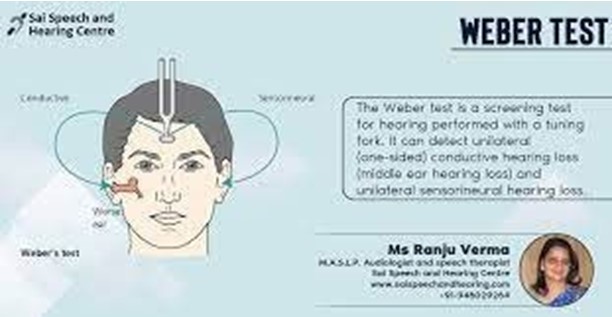A nurse at a long-term care facility is providing change-of-shift report to an oncoming nurse about a client who has shingles. Which of the following information should the nurse include in the report?
The type of transmission-based precautions in place.
The times for routine vital sign measurements.
The client's background health history.
The number of visitors the client had during the shift.
The Correct Answer is A
When providing change-of-shift report about a client who has shingles, the nurse should include information about the type of transmission-based precautions in place to prevent the spread of infection to other clients and staff. Shingles is caused by the varicella-zoster virus and can be spread through direct contact with the rash.
- The times for routine vital sign measurements may be important information to include in the report, but it is not specific to the client's condition of shingles.
- The client's background health history may be important information to include in the report, but it is not specific to the client's condition of shingles.
- The number of visitors the client had during the shift may be important information to include in the report, but it is not specific to the client's condition of shingles.

Nursing Test Bank
Naxlex Comprehensive Predictor Exams
Related Questions
Correct Answer is A
Explanation
When a hospice nurse is visiting a client who has terminal cancer, the statement "I miss him so much already" by the client's partner should be recognized as an indication of anticipatory grief. Anticipatory grief is the grief that occurs before a loss and can include feelings of sadness, longing, and missing the person who is dying.
Option b is incorrect because anger is a common emotion during the grieving process but does not necessarily indicate anticipatory grief.
Option c is incorrect because planning for the future does not necessarily indicate anticipatory grief.
Option d is incorrect because not discussing funeral arrangements does not necessarily indicate anticipatory grief.
Correct Answer is A
Explanation
The correct answer is that the nurse should place the base of a vibrating tuning fork on the top of the client's head when performing Weber's test. Weber's test is a screening test for hearing that can detect unilateral (one-sided. conductive hearing loss (middle ear hearing loss) and unilateral sensorineural hearing loss (inner ear hearing loss)².
Options b, c and d are not correct actions for performing Weber's test. Counting how many seconds a client can hear a tuning fork after it has been struck, placing the base of a vibrating tuning fork on the client's mastoid process and moving a vibrating tuning fork in front of the client's ear canals one after the other are not part of Weber's test.

Whether you are a student looking to ace your exams or a practicing nurse seeking to enhance your expertise , our nursing education contents will empower you with the confidence and competence to make a difference in the lives of patients and become a respected leader in the healthcare field.
Visit Naxlex, invest in your future and unlock endless possibilities with our unparalleled nursing education contents today
Report Wrong Answer on the Current Question
Do you disagree with the answer? If yes, what is your expected answer? Explain.
Kindly be descriptive with the issue you are facing.
